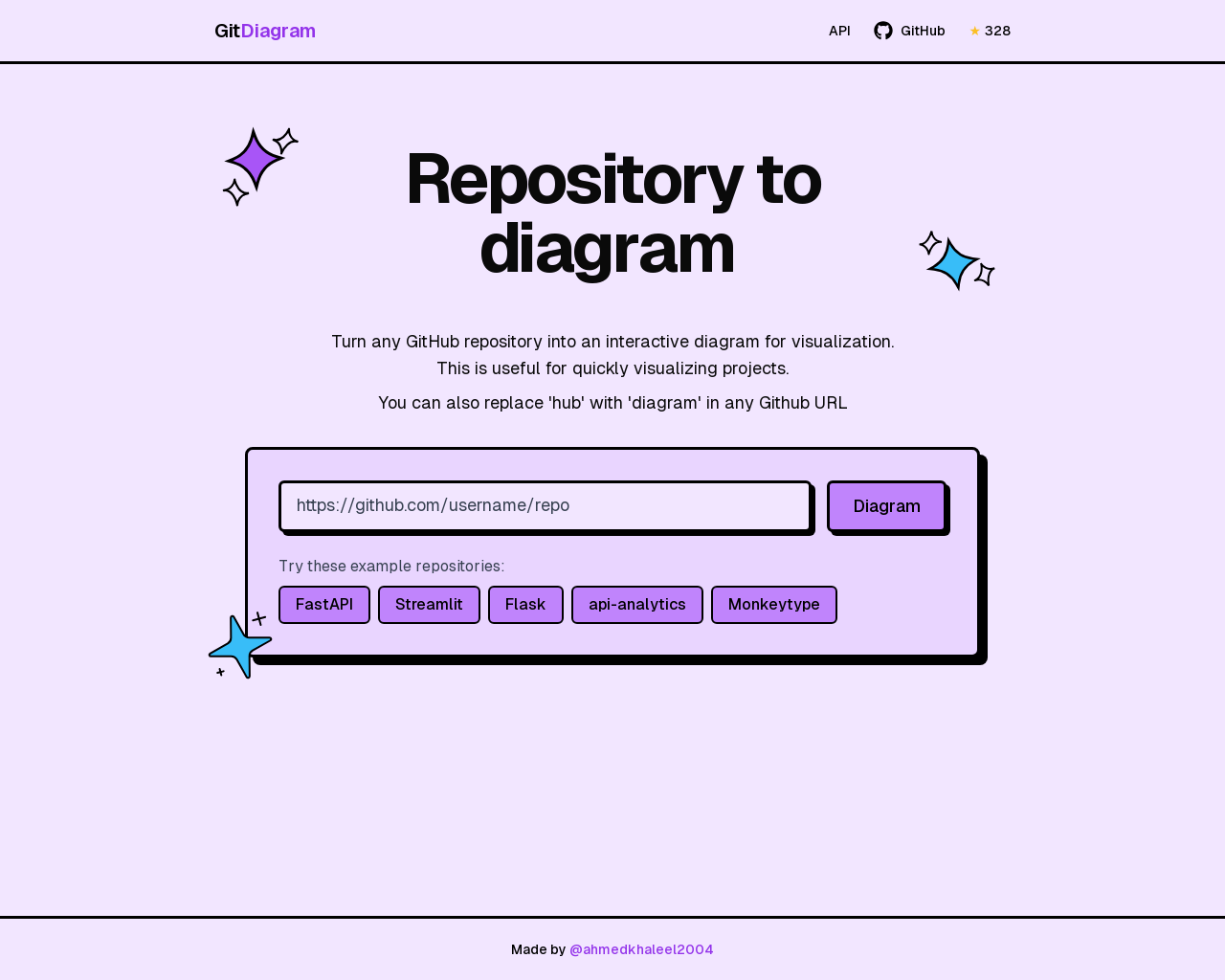

Highlight 1
GitDiagram simplifies the understanding of large codebases by visualizing project structures through interactive diagrams, making it a valuable tool for developers.
Highlight 2
The intuitive feature that allows users to access diagrams simply by altering the repository URL promotes ease of use and quick access.
Highlight 3
As an open-source tool, GitDiagram encourages community involvement and feedback, which can lead to continuous improvement and innovation.

Improvement 1
Providing access to private repositories could expand user utility for those working on collaborative projects.
Improvement 2
Enhancing the UI design and overall user experience to make it more aesthetically pleasing and user-friendly could attract a broader audience.
Improvement 3
Creating a comprehensive help section or tutorial could assist new users in getting started, helping them maximize the benefits of the tool.
Product Functionality
Implement features such as support for private repositories and options to customize diagram layouts.
UI & UX
Revamp the UI to improve visual appeal and usability, ensuring that navigation is intuitive and visually engaging.
SEO or Marketing
Enhance the website's SEO by improving keyword optimization around topics like 'GitHub visualization tools' and 'developer productivity'.
MultiLanguage Support
Consider adding multi-language support to cater to a broader international audience, enabling more developers worldwide to utilize the tool.
- 1
How do I create a diagram for a GitHub repository?
To create a diagram, simply replace 'hub' with 'diagram' in the URL of any public GitHub repository.
- 2
Can GitDiagram work with private repositories?
Currently, GitDiagram only supports public repositories. However, the developer is considering adding private repository support based on user demand.
- 3
What technologies does GitDiagram use?
GitDiagram utilizes Mermaid.js for diagram generation and interfaces with the GitHub API to extract relevant information from repositories.
